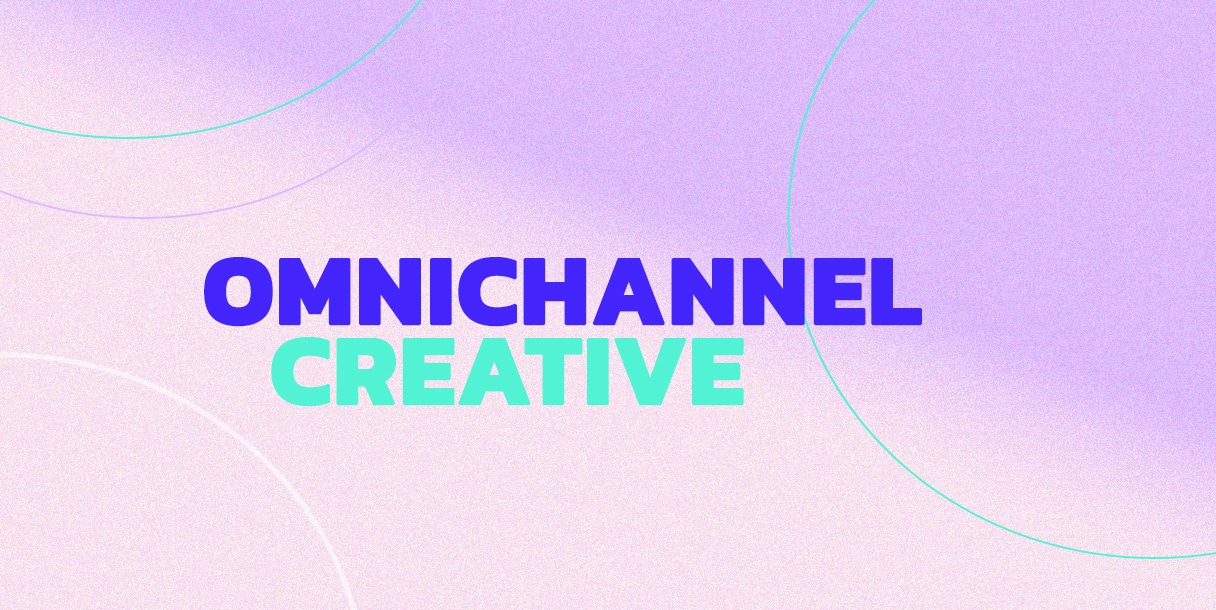Home » Creative Blog » Blog » Omnichannel creative
Omnichannel creative
The Omnichannel Creative
Design titles come in all shapes and sizes. However, they all serve a purpose and have a reason. You could argue that you don’t necessarily need a job title, but job titles come with responsibilities. A job title can help us set clear expectations. Just like brands, we strive for the a positioning, and as we know, terminology and tone of voice are part of that positioning.
What about omnichannel creative?
An omnichannel creative sees the bigger picture, specifically focusing on the creative process of omnichanneling. The term “omnichannel” has been around for a while, and in my opinion, it will still be relevant in 10 years. Terms come and go, but that’s evolution. Omnichannel is a generic and holistic term: omni + channel. Omni literally means “in all ways.” Channel speaks for itself—channels come, go, and evolve. From physical to digital and from digital to physical, it’s about the overall experience. It requires a lot of creativity and attentiveness to anticipate on this.
I see a channel as the context in which something takes place. You may wonder whether we should use the term channels because channels basically stand alone. Concepts must arise from the user’s perspective and they do not think in terms of channels but in terms of needs. Create concepts based on needs & trends and investigate which channels are available, connect or even need to be created based on these needs.
Responsibilities
An omnichannel creative is a concept specialist who thinks holistically, employs a human-centered approach, and never loses sight of qualitative insights. As an omnichannel creative, you possess design capabilities and essentially design with two fundamental objectives in mind:
- Enjoy human life
- Nourish profit growth
You might find this basic, but consider all the KPIs and metrics included in the strategy. Essentially, they all boil down to these two main objectives. Creative thinking is nothing without business thinking. Although an omnichannel creative focuses on the creative process and reasons from the consumer / user perspective, concepts cannot materialize without considering the business aspect.
Specific questions (internal/external)
Data is, of course, crucial. From hard KPIs to soft KPIs, from observations to analysis. These insights serve as fuel for creative interpretations.
- How can we ensure that our visual identity is distinctive & consistent across every channel?
- How can we encourage our customers to use the “loyalty” app?
- Design a campaign landing page that encourages physical visits.
- You want a physical concept for implementing influencer marketing.
- How can we incorporate more “always-on” or storytelling elements in-store?
- Design an interactive FAQ section.
- How I create a customer onboarding flow?
- Creating A physical material library that you can take home digitally.
Concrete deliverables
- Sketches & styleboards
- Layouts & mock-ups
- Wireframes
- Generative AI visuals (3D / 2D)
- Visual design
- Concept playbooks
Product design in an omnichannel context
The title product design nowadays focuses on digital and the UX aspect. Even though the starting point is multidisciplinary, it is not immediately associated with physical concepts. Omnichannel creativity inherently focuses on the synergy between digital and physical. This is also how people want to experience it.
When talking about omnichannel—retail, brand, and also B2B—I believe we should always keep in mind the purpose (why) of your business and why you are here as a human. It may sound philosophical, but with sensemaking, you can get to the core.
We have a work life and a personal life; how do you want to utilize this time? Hospitality and entertainment are standalone business models; everyone needs leisure time. My personal vision is that we should look more into these business models, service, entertainment, and care—it’s not a luxury, it’s a necessity. It helps us to create new products or services that meet current needs. I recommend checking out the report “The Age of Re-enchantment” by Wunderman Thompson.
